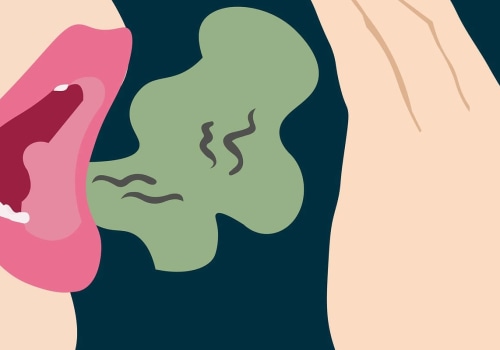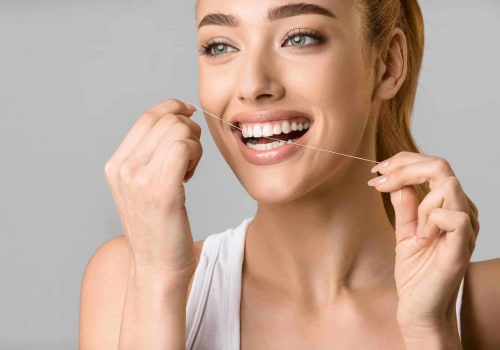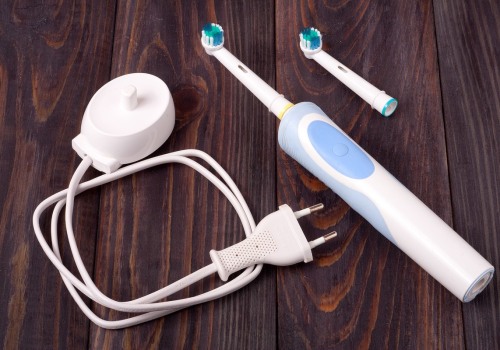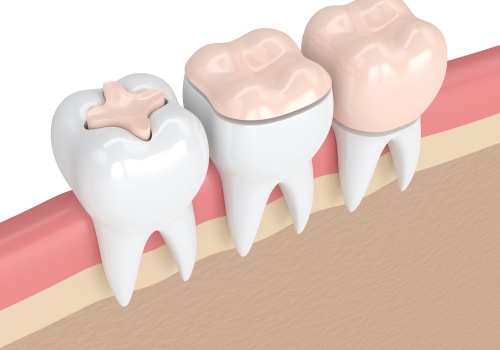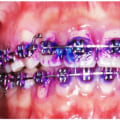Having good oral hygiene habits is essential for a healthy and beautiful smile. Not only do our teeth need to be kept clean and bright, but we also need to ensure that our gums and tongue remain healthy. By understanding the importance of oral hygiene, you can help keep your teeth and gums healthy and strong for years to come. In this article, we'll provide a comprehensive overview of good oral hygiene habits and how they can help prevent teeth discoloration and keep your teeth looking their best.
We'll discuss topics such as brushing your teeth twice daily, flossing regularly, using the right toothpaste, avoiding unhealthy foods, and more. We'll also provide tips on how to maintain good oral health and keep your teeth looking their best. Finally, we'll discuss how to find the right dentist for your needs.
In order to maintain good oral hygiene,
it is important to brush your teeth twice a day with a soft-bristled toothbrush and fluoride toothpaste. When brushing, be sure to gently brush the outer surfaces, inner surfaces, and chewing surfaces of all your teeth.Don't forget to brush your tongue too! In addition to brushing your teeth, it is also important to floss daily. Flossing helps remove food particles and plaque that can build up between your teeth and along the gum line. It is important to use gentle strokes when flossing so you don't damage your gums.
Rinsing with mouthwash
is another important part of good oral hygiene. Mouthwash can help reduce plaque and freshen breath. Look for a mouthwash that contains fluoride for added protection against cavities.It's also important to choose the right toothbrush and toothpaste for your needs. A soft-bristled toothbrush is best as it won't damage your gums or enamel. As for toothpaste, look for one that contains fluoride and has been approved by the American Dental Association (ADA).In addition to practicing good oral hygiene habits, there are also steps you can take to prevent teeth discoloration. Avoiding certain foods and drinks such as coffee, tea, and red wine can help reduce staining. Smoking should also be avoided as it can cause discoloration.
Additionally, using a whitening toothpaste can help remove surface stains from your teeth.
Preventing Teeth Discoloration
In addition to practicing good oral hygiene habits, there are also steps you can take to prevent teeth discoloration. Avoiding certain foods and drinks such as coffee, tea, and red wine can help reduce staining.Smoking
should also be avoided as it can cause discoloration. Additionally, using a whitening toothpaste can help remove surface stains from your teeth.Rinsing with Mouthwash
Rinsing with mouthwash is an important part of good oral hygiene.Mouthwash can help reduce plaque and bacteria in the mouth, as well as help protect against cavities. It's important to select a mouthwash that contains fluoride, as this will help strengthen tooth enamel and provide added protection against cavities. When selecting a mouthwash, it's important to read the label to make sure it contains fluoride. You should also consider the type of mouthwash you want to use; there are different types available for different needs. For example, there are mouthwashes specifically designed to fight bad breath, reduce plaque, or whiten teeth. It's important to follow the instructions on the mouthwash package when using it.
Generally, the recommended amount is about one tablespoonful of mouthwash swished around your mouth for thirty seconds. Afterwards, spit out the mouthwash and rinse your mouth with water. Using a mouthwash twice a day is recommended for best results. In addition to providing added protection against cavities, using a fluoride-containing mouthwash can help keep your teeth and gums healthy and prevent discoloration. Remember to read the labels when selecting a mouthwash to make sure it contains fluoride.
Choosing the Right Toothbrush and Toothpaste
It's important to choose the right toothbrush and toothpaste for your oral hygiene needs.A soft-bristled toothbrush is best, as it won't damage your gums or enamel. The American Dental Association (ADA) recommends using a toothpaste that contains fluoride. This helps to protect the enamel from eroding and prevents cavities. When selecting a toothbrush, make sure it fits comfortably in your mouth and is easy to use.
Look for toothbrushes with ergonomic handles and small heads to help you reach all areas of your mouth. It's also a good idea to choose a toothbrush with a timer, so you know when you've brushed for the recommended two minutes. When choosing a toothpaste, look for one that is ADA approved and contains fluoride. Fluoride helps protect your enamel from decay and prevents cavities. Additionally, look for toothpastes that contain other ingredients such as baking soda, which can help reduce plaque buildup and whiten teeth.
Flossing Your Teeth
Flossing is an essential part of good oral hygiene habits.It helps to remove food particles and plaque that can build up between your teeth and along the gum line. Not only does it help keep your teeth clean, but it also helps to prevent discoloration. When flossing, it's important to use gentle strokes so as not to damage your gums. Be sure to floss in a gentle, up-and-down motion, rather than a sawing motion.
This will help to ensure that you don't damage your gums or cause any bleeding. It's also important to make sure that you are using the right type of floss for your teeth. There are various types available, including waxed and unwaxed floss, as well as dental tape and interdental brushes. Talk to your dentist about which type of floss is best for you.
Once you've selected the right type of floss for your teeth, be sure to use it regularly. Floss at least once a day to ensure that all the food particles and plaque are removed from between your teeth and along the gum line.
Brushing Your Teeth
Good oral hygiene habits start with brushing your teeth. When brushing your teeth it is important to use a soft-bristled toothbrush and fluoride toothpaste.Be sure to gently brush the outer surfaces, inner surfaces, and chewing surfaces of all your teeth. Aim to brush for two minutes at least twice a day and make sure to reach all surfaces in your mouth. Replace your toothbrush every three to four months, or sooner if the bristles begin to fray. When brushing, use a circular motion and pay extra attention to the gum line. It is also important to brush your tongue to remove bacteria and food particles that can contribute to bad breath.
Use gentle strokes and rinse your mouth with water after brushing. Good oral hygiene habits are essential for maintaining healthy teeth and preventing discoloration. Brushing twice a day with a soft-bristled toothbrush and fluoride toothpaste, flossing daily, rinsing with mouthwash, and avoiding certain foods and drinks can help keep your teeth looking bright and healthy. Additionally, selecting the right toothbrush and toothpaste can help ensure that you are getting the most out of your oral hygiene routine. It is important to remember that good oral hygiene is an ongoing process that requires dedication and effort.
With regular brushing, flossing, and rinsing with mouthwash, you can keep your teeth looking bright and healthy for years to come.
